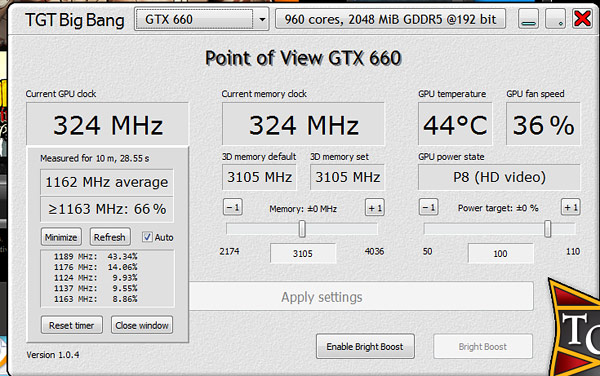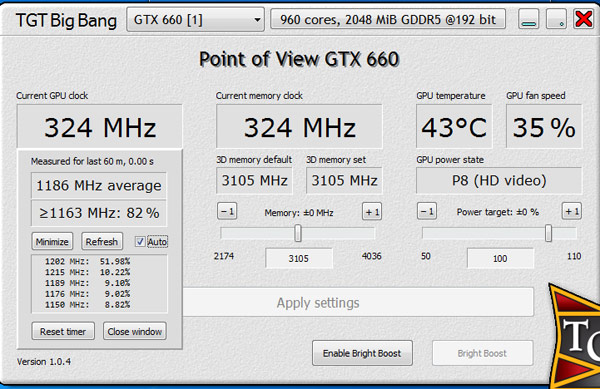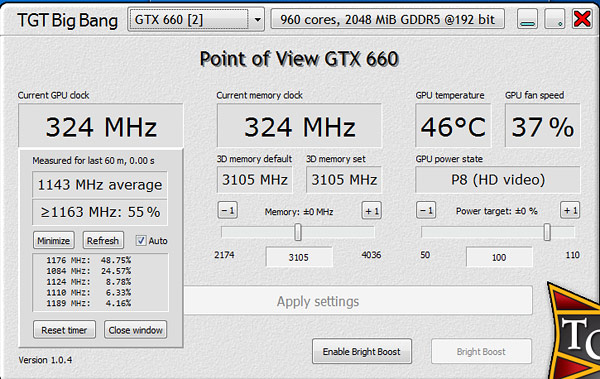Index
The UC boasts “Low Leakage Selection” GPUs so we checked it out with the recently launched GPU management utility Big Bang, which shows clock distribution during auto-overclocking.

The highest GPU Boost clock on the GTX 660 UC was 1189MHz, while the GTX 660 SC’s was 1124MHz. We see a 65MHz difference in auto-overclocking, whereas the Base Clock difference is 39MHz. However, the UC’s clocks vary more often than on the SC. Below you see clocks we measured after half an hour of playing Borderlands 2.
GTX 660 UltraCharged clock distribution:
1189 MHz: 32.25%
1124 MHz: 12.30%
1137 MHz: 10.05%
1176 MHz: 9.87%
1163 MHz: 8.34%
1150 MHz: 8.30%
1110 MHz: 7.62%
1084 MHz: 6.07%
1097 MHz: 5.10%
550 MHz: 0.10%
GTX 660 SuperClocked clock distribution:
1124 MHz: 95.90%
1045 MHz: 3.65%
550 MHz: 0.34%
1110 MHz: 0.09%
1071 MHz: 0.02%
Once we tested SLI we measured even higher clocks on the second GTX 660 UC, up to 1228MHz. This means that not all LLS chips are the same either.

While it’s true that LLS GPUs had higher clocks, results clearly shows that it’s not a significant advantage. LLS GPU can of course be helpful in certain tests or attempts to max out GPU clocks.



